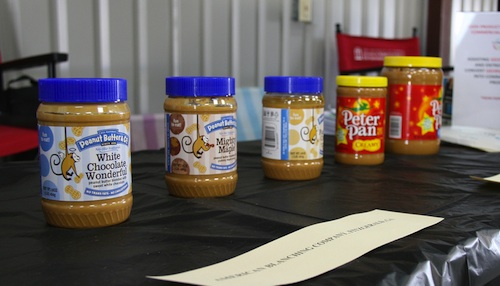The United States produces about 3 million metric tons of peanuts per year.
Nearly 60 percent of that production goes into peanut butter, according to Ruthann Swanson, University of Georgia associate professor of foods and nutrition. About 1.2 billion pounds of peanut butter are available for consumption annually.
What happens to all the peanut skins?
"They’re discarded as waste, which is a shame because peanut skins are high in antioxidants, specifically phenolics, and dietary fiber," said Swanson, a member of the College of Family and Consumer Sciences (FCS) faculty.
Consumers don't seem to mind
Swanson and a team of UGA scientists published a paper recently in the LWT – Food Science and Technology journal that suggests peanut skins can be incorporated in to traditional peanut butter with potentially surprising results. The team included FCS professor emeritus James Hargrove and College of Agricultural and Environmental Sciences food scientists William Kerr and Ron Pegg.
“We found we can do this, and people found it to be acceptable,” Swanson said.
The objective of the project was to assess the effects of peanut skin incorporation on consumer acceptability, with measurements of appearance, flavor, texture, ease of spreadability and overall satisfaction.
Blanched and roasted, too
The study also looked at skins heated to different degrees during processing: blanched (the mildest heat treatment), light-roasted and medium-roasted.
The UGA research team tried varying levels of peanut skin incorporation, going up as high as 5 percent, with no difference from the control as far as acceptability on the blanched skins.
The findings suggest a food company could attempt to diversify its product line by incorporating peanut skins into production, even in the use of other food products, such as cookies, Swanson said.
Consumer acceptance has changed
Historically, consumers have found the presence of particulates in peanut butter to be objectionable, she said. Further, most peanut butter consumers tend to be very “brand loyal,” making new products difficult to market.
“But what has happened in recent years is a movement towards healthier products in general, including nut butters, and an increased emphasis on natural (products), and the peanut butters than contain some skin particles are perceived to be more natural by the consumer,” Swanson said. “This generation does not seem to be as brand loyal, and they want products that are closer to their original state.”








